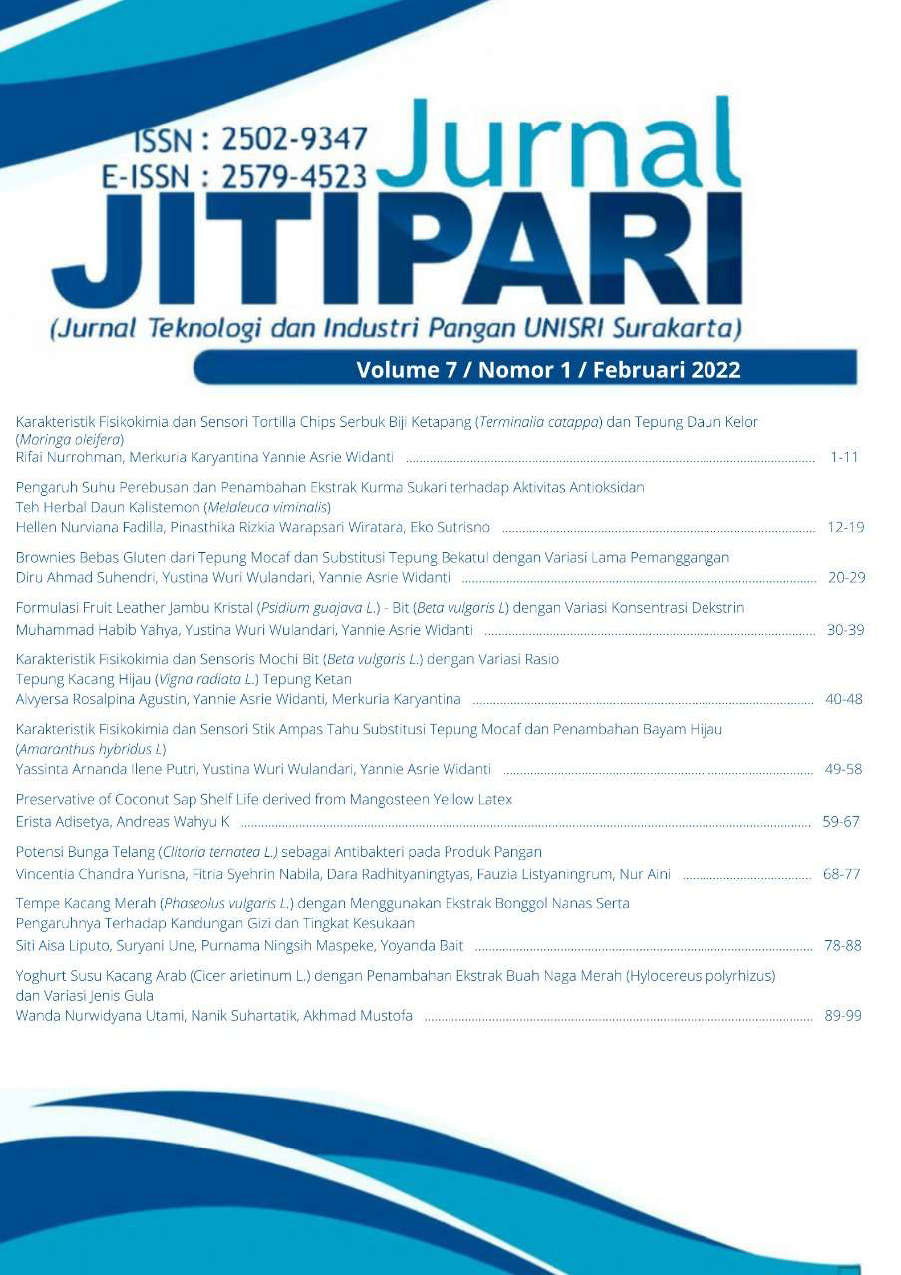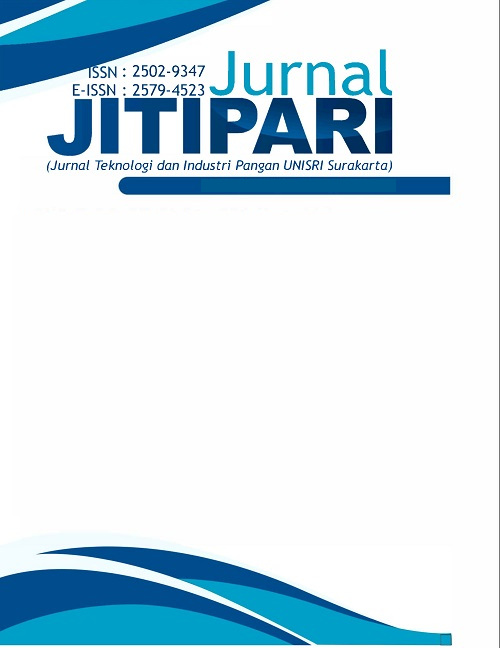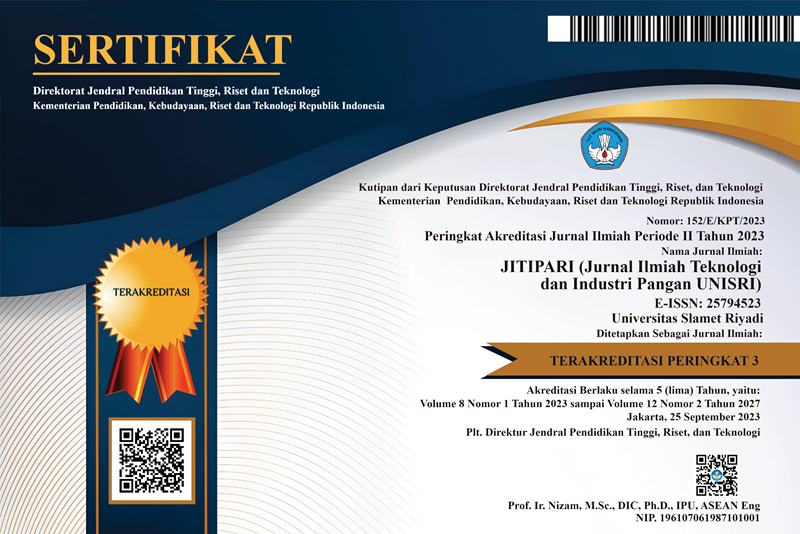Karakteristik Fisikokimia dan Sensori Stik Ampas Tahu Substitusi Tepung Mocaf dan Penambahan Bayam Hijau (Amaranthus hybridus L)
DOI:
https://doi.org/10.33061/jitipari.v7i1.6141Abstract
Stick is a snacksthat haveslong, flat, savory andscrunchy taste madesfrom flour, eggs, butter, water and othersadditional seasonings. Food by-product from tofu has the potential to be used as an ingredientsfor stick makingsbecause of high protein and fiber content. In addition, local rawsmaterials such as mocaf floursand green spinach are rich in fiber content that can fulfill fiber needs of the body. This research is experimentswith purpose was to determine the physical, chemical, sensory characteristics and determine the formulation of sticks that produce high levels of fiber andsprotein. The experimental design is a completely randomized design (CRD) with the first factorscomparing tofu waste flour and mocaf flour (50: 150, 100: 100 and 150: 50) with the additionsof spinach (10%, 20% and 30%). The results showed that the stick formulation with the additionsof the best green spinach based on chemical and organoleptic values were 150 grams of tofuswaste flour, 50 grams of mocaf flour with the addition of 60 grams spinach that have a moisture content 3.742%, an ash content 2.353%, a protein 8.317 %, crude fiber 1.997%, fat 12.115% andscarbohydrate 73.473%. Based on the physical andsorganoleptic values, the tofu dregs flour was 50 grams, 150 grams of mocaf flour with the addition of 20 grams of spinach, the color yield was 2.467%, the flavor of tofu by product 2.200%, the flavor of mocaf was 2.467%, the flavor of spinach was 2.200%, the texture was crispy 3.800% and the total preference was 3.200%.s
Downloads
Published
How to Cite
Issue
Section
License
Copyright (c) 2022 Yassinta Arnanda Ilene Putri

This work is licensed under a Creative Commons Attribution-NonCommercial 4.0 International License.
Authors who publish this journal agree to the following terms:
- Authors retain copyright and grant the journal right of first publication with the work simultaneously licensed under a Creative Commons Attribution-ShareAlike 4.0 International (CC BY-SA 4.0) that allows others to share the work with an acknowledgement of the work's authorship and initial publication in this journal.
- Authors can separately make additional contractual arrangements for non-exclusive distribution published by the journal (e.g., publish it in a book), with an acknowledgement of its initial publication in this journal.
- Authors are allowed and encouraged to send their work via online (e.g., in the institutional repositories or their website) after published by the journal.










